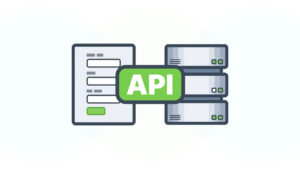One Codebase, All Platforms – The Power and Future of Cross-Platform Development
In today’s hyper-connected world, a mobile presence is no longer a luxury but a necessity for businesses and individuals alike. With two dominant operating systems, iOS and Android, reaching a wide audience traditionally meant developing two separate, native applications. This “two-app” approach, while offering peak performance, often came with a hefty price tag in terms of time, resources, and maintenance.
Enter cross-platform development: a paradigm shift that allows developers to write a single codebase and deploy it across multiple platforms, primarily iOS and Android. This innovative approach has revolutionized how applications are built, offering a compelling alternative for projects seeking broader reach, faster time-to-market, and optimized resource allocation.
This blog post will delve deep into the world of cross-platform development, exploring its advantages, challenges, popular frameworks, and what the future holds for this transformative technology.
The Allure of Cross-Platform: Why Choose a Unified Approach?
The rise of cross-platform development isn’t just a trend; it’s a strategic move driven by several compelling benefits:
- Cost-Effectiveness: This is perhaps the most significant advantage. By maintaining a single codebase, you effectively cut development costs by eliminating the need for separate iOS and Android teams. This translates to fewer developers, less time spent coding, and ultimately, a more efficient use of your budget. Estimates suggest cost savings of 30-40% compared to native development.
- Faster Time-to-Market: In the fast-paced digital landscape, speed is critical. Cross-platform development significantly accelerates the development cycle. With one codebase, updates, features, and bug fixes can be implemented simultaneously across both platforms, dramatically reducing the time it takes to launch your app and iterate on it.
- Wider Audience Reach: Why choose one platform when you can have both? A cross-platform app instantly expands your potential user base to encompass both iOS and Android users, which collectively account for over 98% of the global mobile market. This broader reach can lead to increased downloads, higher engagement, and ultimately, greater revenue.
- Easier Maintenance and Updates: Managing two separate codebases can be a logistical nightmare. Cross-platform development simplifies maintenance as changes, bug fixes, and new features are applied to a single codebase and then deployed across all platforms. This streamlines the update process and ensures consistency.
- Code Reusability: At its core, cross-platform development is about maximizing code reusability. Developers can share a substantial portion (often 70-90%) of the code logic and even UI components across platforms, minimizing repetitive tasks and accelerating development.
- Consistent User Experience (UX) and User Interface (UI): While subtle platform-specific nuances exist, cross-platform frameworks aim to provide a consistent look and feel across devices. This ensures that users receive a cohesive brand experience regardless of their chosen operating system, strengthening brand recognition and user familiarity.
- Smaller Teams, Easier Management: With a unified codebase, you often need a smaller development team, or at least a more streamlined one. This simplifies team management, communication, and coordination, leading to a more agile and efficient development process.
The Balancing Act: Understanding the Challenges
Despite its numerous benefits, cross-platform development isn’t a one-size-fits-all solution. It comes with its own set of considerations:
- Potential Performance Limitations: While modern frameworks have made significant strides, cross-platform apps may still experience slight performance overhead compared to purely native applications, especially for graphically intensive games, complex animations, or highly demanding computational tasks. This is due to an abstraction layer between the code and the device’s native components.
- Limited Access to Platform-Specific Features: While frameworks are constantly improving, direct access to the very latest platform-specific APIs (e.g., cutting-edge AR/VR capabilities, specific sensor integrations, or brand-new OS features) might be delayed or require custom native modules, adding complexity.
- UI/UX Nuances: Achieving a pixel-perfect, truly native look and feel on both iOS and Android can be challenging. Each platform has its unique design guidelines (Apple’s Human Interface Guidelines and Google’s Material Design). While cross-platform frameworks offer components that mimic native ones, developers might need to implement platform-specific UI adjustments to perfectly match user expectations.
- Dependency on Framework Updates: Cross-platform frameworks rely on their respective maintainers (Google for Flutter, Meta for React Native) to keep pace with changes in iOS and Android operating systems. Delays in framework updates for new OS features or security patches can sometimes impact development.
- Debugging Can Be More Complex: Debugging issues that span across the cross-platform layer and the underlying native components can sometimes be more intricate than debugging a purely native app.
- Larger App Size: Depending on the framework and the inclusion of native bridges or runtime environments, cross-platform apps can sometimes have a slightly larger file size than their native counterparts.
The Frontrunners: Popular Cross-Platform Development Frameworks in 2025
The cross-platform landscape is vibrant and constantly evolving. Here are some of the leading frameworks dominating the market in 2025:
- Flutter:
- Developer: Google
- Language: Dart
- Strengths: Known for its exceptional UI capabilities, “hot reload” for rapid iteration, excellent performance (natively compiled), and a rich set of pre-built widgets that render their own UI, providing pixel-perfect control. It’s a strong contender for visually stunning and high-performance apps.
- Popular Apps: Google Ads, Alibaba, BMW, Reflectly, Philips Hue.
- React Native:
- Developer: Meta (Facebook)
- Language: JavaScript (with React)
- Strengths: Leveraging the popular React JavaScript library, React Native allows web developers to easily transition to mobile. It offers a large and active community, extensive libraries and tools, and provides a near-native experience by rendering native UI components.
- Popular Apps: Instagram, Facebook, Microsoft Teams, Pinterest, Uber Eats.
- Xamarin:
- Developer: Microsoft
- Language: C# (.NET)
- Strengths: A robust choice for enterprises and developers familiar with the Microsoft ecosystem. Xamarin allows for extensive code sharing (up to 90%) and provides access to native APIs. It’s well-suited for business applications and integrates seamlessly with Microsoft services.
- Popular Apps: UPS, Alaska Airlines, The World Bank, Storyo.
- Ionic:
- Developer: Ionic Team
- Language: JavaScript (HTML, CSS, Web Technologies, often with Angular or React)
- Strengths: Ideal for web developers, Ionic allows building hybrid apps using familiar web technologies. It offers a rich library of UI components, easy testing, and cost-effectiveness. It’s excellent for rapid prototyping and simple to moderately complex apps.
- Popular Apps: Sworkit, Untappd, MarketWatch.
- Kotlin Multiplatform Mobile (KMM):
- Developer: JetBrains
- Language: Kotlin
- Strengths: While newer to the scene, KMM is gaining significant traction. It allows developers to share business logic, networking, and data layers across iOS and Android while still building platform-specific UIs using native UI toolkits (SwiftUI for iOS, Jetpack Compose for Android). This offers a unique balance between code sharing and native UI experiences.
- Popular Apps: Memrise, Cash App, VMware.
The Future of Cross-Platform Development: Trends and Predictions
The trajectory of cross-platform development is upward, with several exciting trends shaping its future:
- Closer to Native Performance: Frameworks like Flutter and KMM are continually pushing the boundaries of performance, striving to deliver experiences indistinguishable from native apps. We’ll see further advancements in rendering engines, compilation methods, and native module integration.
- Enhanced Developer Experience: “Hot reload,” improved debugging tools, and more intuitive IDE integrations will continue to enhance the developer experience, making cross-platform development even faster and more enjoyable.
- AI and Machine Learning Integration: The integration of AI and ML directly into cross-platform frameworks will become more seamless, enabling developers to build smarter, more personalized, and predictive applications with less effort.
- Beyond Mobile: Desktop and Web Convergence: Frameworks like Flutter are already extending their reach to desktop and web development, allowing developers to target even more platforms from a single codebase. This vision of “write once, run everywhere” is becoming increasingly tangible.
- Low-Code/No-Code Platforms with Cross-Platform Capabilities: The rise of low-code and no-code platforms will democratize app development, enabling even non-developers to create functional cross-platform applications, further expanding the reach of mobile technology.
- Spatial Computing and AR/VR Integration: As platforms like Apple Vision Pro emerge, cross-platform frameworks will adapt to support spatial computing and augmented/virtual reality experiences, opening up entirely new dimensions for application development.
- Increased Focus on Security and Privacy: With growing concerns about data privacy, cross-platform frameworks will continue to prioritize robust security features and adherence to privacy regulations, ensuring user trust and data protection.
Who Should Choose Cross-Platform Development?
Cross-platform development is an excellent choice for:
- Startups and SMEs: Looking to launch an MVP quickly and cost-effectively to validate their idea across both major platforms.
- Businesses with Budget Constraints: Seeking to maximize their development budget by building a single app for a wider audience.
- Projects with Time-to-Market Sensitivity: Where rapid deployment and iterative updates are crucial.
- Apps with Standard Functionality: That don’t require heavy utilization of highly specialized, platform-specific hardware features.
- Teams with Web Development Expertise: Who can leverage their existing JavaScript or C# skills for mobile development.
However, for highly complex, performance-intensive applications (e.g., cutting-edge games, advanced AR/VR, or apps requiring deep hardware integration and absolute peak performance), native development might still offer a slight edge.
Conclusion
Cross-platform development has firmly established itself as a powerful and viable strategy in the mobile app landscape. Its ability to deliver a wider reach, faster development cycles, and significant cost savings makes it an attractive option for a vast array of projects. While certain trade-offs exist, the continuous evolution of frameworks like Flutter, React Native, and Kotlin Multiplatform Mobile is rapidly closing the gap with native performance and feature access.
As we move further into 2025 and beyond, cross-platform development will undoubtedly continue to grow, fueled by advancements in AI, expanded platform reach, and an ever-increasing demand for efficient and ubiquitous mobile experiences. For businesses and developers alike, embracing this unified approach is not just about saving resources; it’s about staying competitive and building the future of mobile connectivity.




